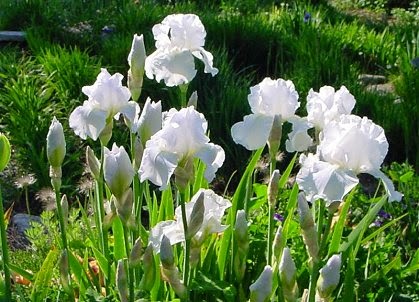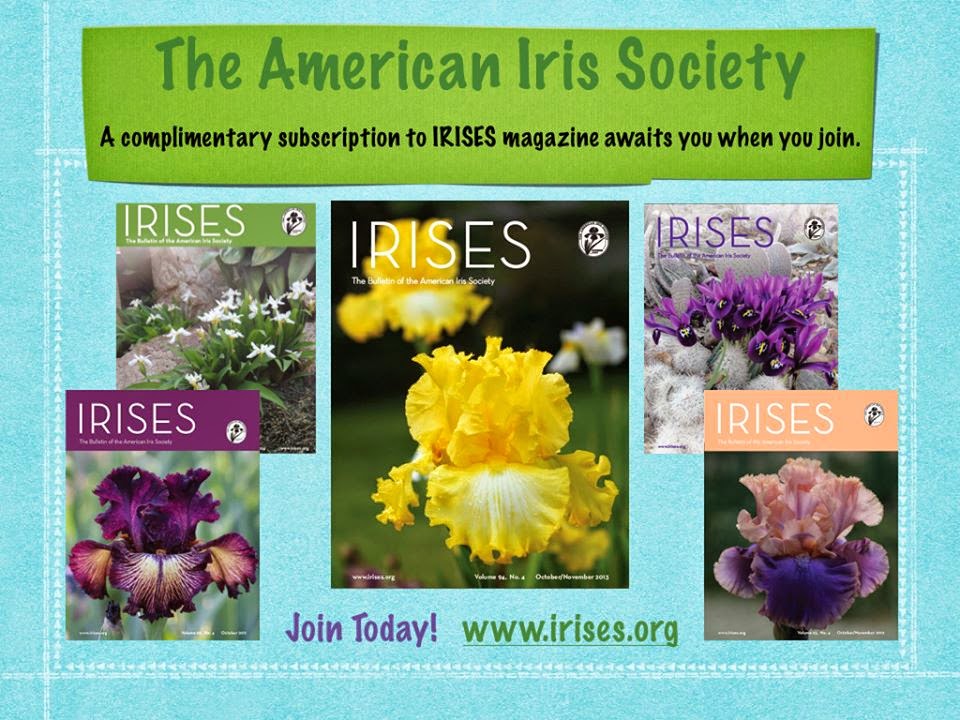By Mike Starrhill
With spring fast approaching, it is time to start making plans to attend the American Iris Society's spring 2015 Convention, "Iris in Wonderland." This year it is being held in beautiful Portland, Oregon, from May 18th to the 23rd. Iris friends old and new will be meeting up to tour gardens and see the very latest and greatest creations our hybridizers have to show off, as well as attending all the events, presentations and meetings for the various specialized societies. It is a wonderful time and we invite you to join us!
I was so delighted to attend the 2006 Portland Convention, "Reigning Iris." It was my first Convention and everyone was so friendly and made me feel right at home. It was so much fun to meet iris friends that I had only known from the internet, and let me tell you, the gardens and flowers are amazing. Here are some photos I took at the gardens that will again be showcased.
Aitken's Salmon Creek Garden, in Vancouver, WA: Spread over a lovely hillside, the rows and rows of flowers beckon visitors further and further into the distance. Terry and Barbara grow a wide variety of species and there is always something surprising to stumble upon.
 |
Visitors enjoy the blooms at Aitken's Salmon Creek Garden,
AIS Convention 2006. |
Mid-America Garden, in Brooks, OR, is the home of Paul Black and Thomas Johnson, two of America's top hybridizers. One of the highlights for me in this garden was seeing a preview of what's to come in their reselect seedling beds.
 |
Display beds at Mid-America Garden,
AIS Convention 2006. |
Schreiner's Iris Gardens in Salem, OR, is a destination for gardeners of all stripes. While irises are the main attraction, their display gardens are filled with companion plants and are always a delight. It is sure to inspire you with plenty of ideas to take home to your garden.
 |
Display garden at Schreiner's Iris Gardens,
AIS Convention 2006. |
And, again, seeing the rows and rows of reselected seedlings gives us a sneak peek into the future and the wonderful advances we'll see shaping iris fashion in years to come.
 |
Seedling beds, Schreiner's Iris Gardens,
AIS Convention 2006. |
We'll also be visiting Mt. Pleasant Iris Farm, in Washougal, WA, home of Chad Harris and Dale Grams; Miller's Manor Gardens, home of Lynn and Roger Miller; and Wildwood Gardens, home of Tracy and Will Plotner.
 |
I. pseudacorus variegata,
photographed at Mt. Pleasant Iris Farm |
After the main Convention, the Siberian & Species Convention will take place on the 24th and 25th. "Another Day in the Garden" will take visitors back to some of the previous gardens as well as the garden of Kevin Vaughn. In addition to the cornucopia of irises you'll enjoy, the sights and attractions of Portland are nearby, and you have all the stunning natural beauty of the Pacific Northwest within easy driving distance. From the mountains of the Cascades and the rainforests of the Olympics, breathtaking drives through the Columbia Gorge, and the incredible geology from the deserts to the volcanoes to our beautiful beaches, there is something for everyone to enjoy.
You can find all the details you'll need to plan your trip at the
Convention's main website. See you there!
 |
Flower arrangements at Cooley's Gardens,
AIS Convention 2006. |
 |
Mid-America Gardens, iris fields.
(click for larger view) |




























